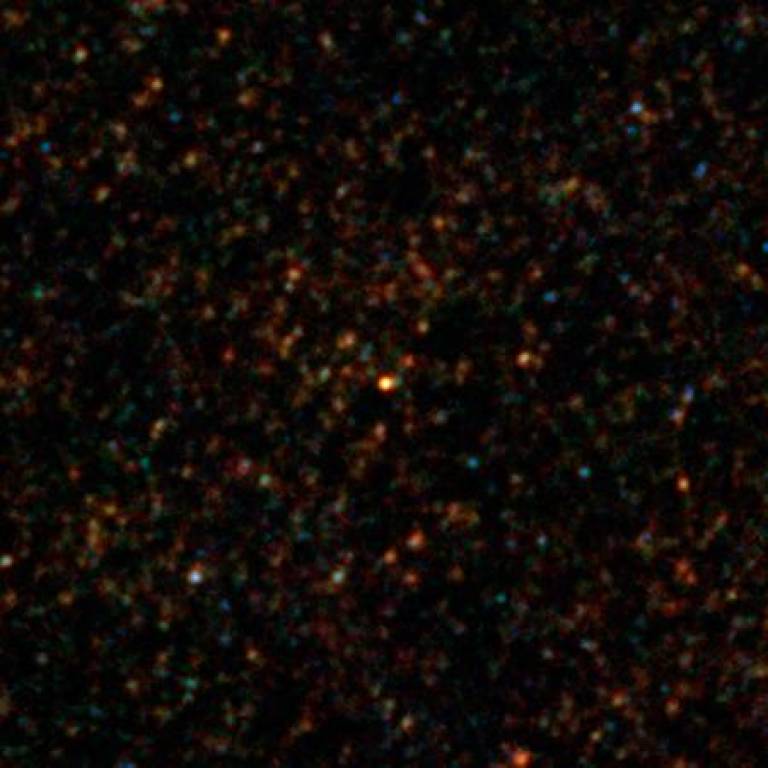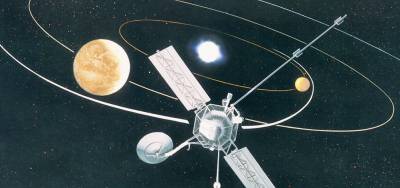A bright spark in the early Universe
27 May 2013

UCL's Department of Space and Climate Physics, also known as the Mullard Space Science Laboratory (MSSL), is one of the UK's top centres for spacecraft technology. Among the missions MSSL has played a key role in is the Herschel Space Observatory, a European space telescope that recently completed its four year mission to observe the sky in infrared light. MSSL was part of the consortium that built the Spectral and Photometric Imaging Receiver (SPIRE), one of the cameras on board, which took the image above.
Every fleck of light in this image is a faint, distant galaxy, made up of billions of stars, and seen across billions of light years of void. But the bright one in the very centre is special: it is much brighter than the others because it is undergoing a powerful starburst, in which interstellar gas is rapidly being converted into new stars. Herschel was able to snap this image despite the galaxy being incredibly distant: its light has taken 11 billion years to reach us, meaning we see it as it was when the Universe was just a fraction of its current age.
Though it went out of action in April when it ran out of coolant, the results from Herschel are still being analysed. A paper in the current issue of Nature, co-authored by MSSL's Mat Page, investigates the bright galaxy and its implications for how galaxies evolved in the early years of cosmic history.
The image's width is around two thirds the size of the full Moon; none of the objects in it is visible with the naked eye.
Credit: ESA/NASA/JPL-Caltech/UC Irvine/SPIRE consortium
Links
- UCL Department of Space and Climate Physics (Mullard Space Science Laboratory)
- Herschel Space Observatory
High resolution images
This image can be reproduced freely providing the source is credited
 Close
Close




